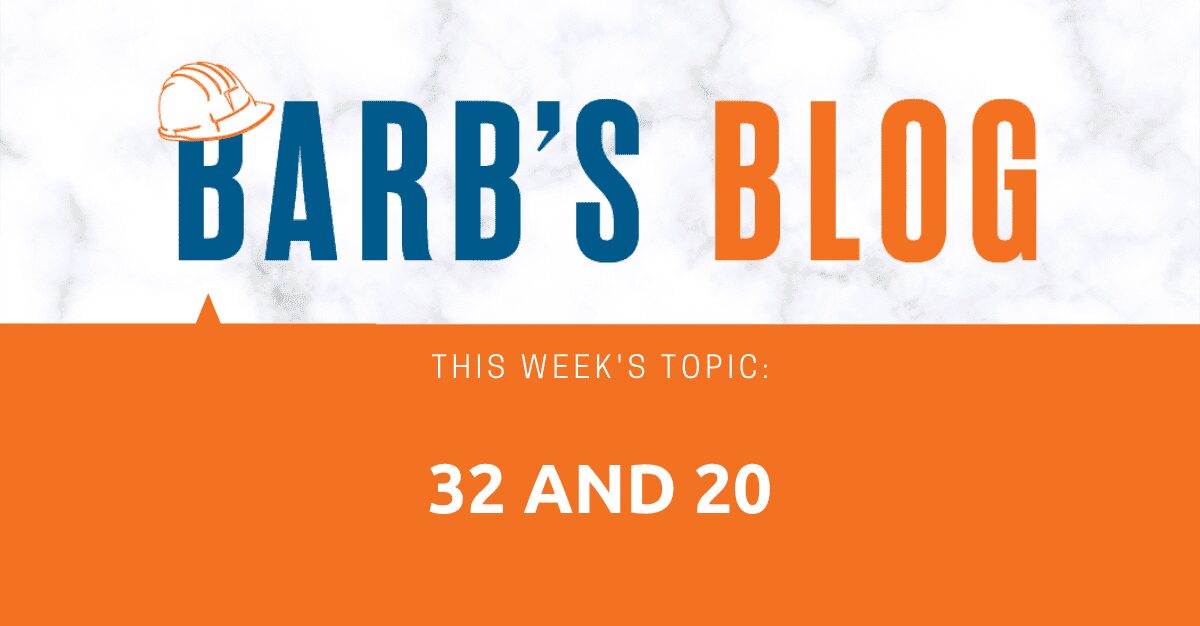
Today I want to address the workforce goals in Minnesota. At a DBE and Workforce Advisory Committee meeting I attended, the end of the meeting got a bit contentious regarding workforce. I thought my blog should summarize this topic and give my observations.
The workforce goals were established in 1978 as an Affirmative Action for minority and women inclusion on construction jobsites by the United States Department of Labor (DOL). Diversity goals whether business or workforce are dictated by the funding sources of a project. Thus, in addition to the US DOL set goal, other authorities (state and local) can establish goals for inclusion that must be equal to or greater than the federal.
Minnesota Department of Human Rights (MDHR) has the authority to set goals for State funded projects more than $100,000. That goal can be “adopted” by other contracting entities as well. Currently the metro region workforce goals on state funded projects are 32% minority and 20% female hours worked, set in 2012 and 2017 respectively. You can view geographic specific workforce goals in the state here.
According to the US Department of Labor’s office Appendix P, “goals are not quotas, set-asides, or a device to achieve proportional representation or equal results. Rather, the goal-setting process is used to target and measure the effectiveness of affirmative action efforts to eradicate and prevent barriers to equal employment opportunity. Goals under Executive Order 11246, as amended, do not require that any specific position be filled by a person of a particular sex, race, or ethnicity. Instead, the requirement is that contractors engage in outreach and other efforts to broaden the pool of qualified candidates to include minorities and women. The use of goals is consistent with principles of merit because goals do not require an employer to hire a person who does not have the qualifications needed to perform the job successfully, hire an unqualified person in preference to another applicant who is qualified, or hire a less qualified person in preference to a more qualified person.” I will dive further into Good Faith Efforts in a future blog.
With that background, you can do a google search on MN workforce goals and see article after article about how contractors are not meeting the goals. This gives the community at large the impression that contractors are continually failing to hire minority and women. The issue is much more complicated than that. I am not naïve enough to think that all contractors are doing their best to move the dial on inclusion. I will preface this with I am speaking about those in the industry that are making real attempts to build an inclusive workforce.
Contractors not meeting workforce goals does not mean they aren’t trying. Many factors contribute to the shortage in hours and include:
-
- Are you are hiring?
- Are women or minorities available in the union at the level you are hiring for?
- Are you adhering to the journeyman to apprentice ratios?
- Did you have minority and female workers voluntarily leave your company?
- Do you have enough work to sustain your employees longer than the one public project with goals?
- What specific type of construction do you perform?
Because a high-profile project met a goal it is assumed every contractor on every project can meet the goal – FALSE. In addition to the above list of factors, we know that vertical projects have a greater opportunity to meet the goals due to higher numbers of minorities and females in those trades. AWC has suggested to MDHR on multiple occasions that perhaps they set a downward deviation goal for horizontal work. In my meeting, a comparison was made on how well the vertical contract is doing on workforce numbers compared to the horizontal contract. This was an unfair assessment and perpetuates the narrative that contractors are “failing”.
Instead of looking at raw numbers when evaluating contractor’s efforts to achieve goals, I think we need to look at how much the dial has moved. In 10 years, our average hours worked for both minority and females have close to doubled on projects I have reviewed. We have multiple training and ‘exposure to the trades’ programs that are targeting underrepresented workers in construction. The unions are expanding their apprenticeship program outreach and working with community organizations to increase the workforce pool. AWC implemented an apprentice scholarship for females in 2014 and has supported over 30 female apprentices.
We have come a long way in 10 years and admittedly this industry has a long way to go. I have a couple of takeaways for you today. First, if you could look a little deeper at data and understand that there is more to the story and that improvements are happening. Second, I ask that you continue increasing diversity in your business – in all industries. If you need resources, contact me and I will connect you. Finally, by working together we can succeed in changing the face of this industry. WE are not failing.
— B
